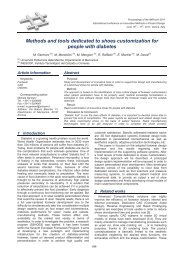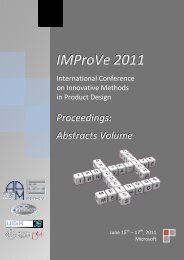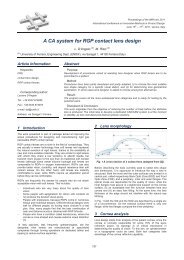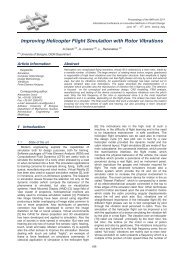IMProVe 2011 - Proceedings
IMProVe 2011 - Proceedings
IMProVe 2011 - Proceedings
You also want an ePaper? Increase the reach of your titles
YUMPU automatically turns print PDFs into web optimized ePapers that Google loves.
Teaching Product Design and Drawing History<br />
accordance with the typology and functions of the helmet chosen by each team and<br />
compared to similar existing products. Therefore, each project resulted in significant<br />
different products concerning several markets in spite of the few same guiding indications<br />
and workflow. By this teaching approach, it is possible to transmit course’s contents<br />
through students’ direct experience and applying product design concepts and innovative<br />
technologies on a specific case study. In this way, the final step of the paper is to compare<br />
the different projects, and underline in each of them the workflow of each product design<br />
and how each team developed the ideas of future engineers.<br />
Keywords: Design Methods, Product Development, Concepts Generation, Rapid<br />
Prototyping.<br />
Corresponding Author: Francesca De Crescenzio<br />
Tel.: +39 0543 374447<br />
Fax.: +39 0543 374444<br />
e-mail: francesca.decrescenzio@unibo.it<br />
Address: Università di Bologna, Seconda Facoltà di Ingegneria, via Fontanelle 40, 47121 Forlì (FC).<br />
Designing an interactive web manager<br />
applied to the development of spatial abilities<br />
C. Melgosa (a), B. Ramos (a), E. Baños (a), E. García (a), A. Román (a)<br />
(a) Universidad de Burgos, Escuela Politécnica Superior, Departamento de Expresión Gráfica (Spain)<br />
Abstract:<br />
The removal of contents (such as Descriptive Geometry) in the syllabi of graphic<br />
expression subjects, partially in some cases and totally others, which had proved to<br />
develop the spatial vision ability, have resulted in our students being lacking in this<br />
capacity.<br />
Despite efforts to reduce these gaps, like the introduction of computers in the learning<br />
process, the authors of this paper believe that researching into tools helping to improve<br />
students' spatial vision is needed.<br />
That´s why we suggest the use of a learning/educational platform tailored to Graphic<br />
Engineering, which manages and evaluates the learning process, taking into account the<br />
development of capacity for spatial vision, from the earliest stages of this development<br />
and in the most deprived pupils.<br />
As a first step we have designed and developed an interactive open web manager of<br />
learning in Graphic Engineering focused on developing the capacity for spatial vision for<br />
components as well as its standard representation.<br />
One aim of this paper is to describe this manager, whose main features are: three profiles<br />
of access, a database to manage all the information, monitoring and evaluation of<br />
June 15 th – 17 th , <strong>2011</strong>, Venice, Italy<br />
136<br />
<strong>IMProVe</strong> <strong>2011</strong> - <strong>Proceedings</strong>










